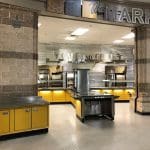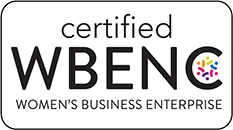Breakfast is a critical meal for students, helping to jump start their brains and bodies…
School is back! What school nutrition leaders need to know for the return of students

The start of the 2021-22 school year is looking much different than the conclusion of the year before. Many school districts are moving away from the online or hybrid models that dominated the 2020-21 school year — including the nation’s largest school district, which announced in May that its 1.1 million students would return to full in-person schooling when school resumes in September.
But despite the return of students, all of school life may not be returning to a simple pre-COVID “normal.” That reality includes the cafeteria, where efforts to prevent the spread of disease dramatically shifted operations over the past 18 months. Some of the changes may be permanent; others temporary. New measures may be needed to accommodate changing dynamics and continued care in the face of the ongoing pandemic.
So what do school nutrition leaders need to know now to be ready for the full return of students?
1. Expect more students
In addition to the reality that school buildings may be back to full or nearly full capacity, school nutrition leaders anticipate that the extension of free school meals through the 2021-22 school year will likely lead to more participation.
When free meals were first offered during the 2020-21 school year, students who may have never tried lunch before tried it and were surprised, said Nancy Padrone, director of food and nutrition of Babylon Unified Free School District in New York.
“I don’t know why anyone would turn down a good, healthy, wholesome, safe meal that doesn’t cost them anything,” she said.
Increased participation may mean making adjustments to get students through the serving line faster, said Padrone, who is considering adding another serving line to her operation to support the expected demand.
Possible solutions include adding grab-and-go stations for prepackaged foods, increasing staff to speed service or even reevaluating the function of the line to identify and relieve bottlenecks.
2. Address lingering skepticism about hygiene and safety
Some logistical shifts caused by the pandemic — reducing touchpoints by using prepackaged foods and utensils, removing self-serve options, etc. — may stick around thanks to both a general heightened germ awareness and increasing case numbers brought on by the spread of COVID’s Delta variant.
Padrone said her cafeteria previously used a mix of wrapped and freestanding utensils but expects the cultural shifts of the last 18 months to make unwrapped utensils a relic of the pre-pandemic past. “I don’t think I would ever do that again,” she said.
Brett Farrell, president of RRA Designs, is a foodservice consultant in New York who has worked with several schools on their cafeteria needs. He said schools like South River High in South River, NJ, have incorporated several remote kiosk areas for grab-and-go service and have discontinued self-serve from wells or heated shelves, relying instead on operator service.
“People get very cautious about touching things where other people have touched,” he said. “It’s going to have lingering effects for a while. I think that’s going to hang around for at least another year or 18 months.”
3. Keep embracing flexibility
If there’s one lesson K-12 operators learned during the pandemic, it was flexibility. And that’s a lesson Farrell believes schools should keep embracing.
Early reports indicate that supply chain issues, which have been racking everything from the automotive industry to the chicken wing world, are now striking schools, which are finding it harder to source their normal food menu items.
Flexibility in menu creation and execution will allow schools to continue to provide healthy and enjoyable meals.
Equipment flexibility can not only help with the potential for last-minute menu needs — like switching wells from hot to cold if the planned chicken sandwich lunch suddenly needs to be cold cuts — it can also help an operation be ready for future changes.
If you’re investing in kiosks or mobile counters to serve as remote serving stations, be sure they’re flexible enough to become self-serve stations at whatever point these services can be offered in the future.

4. Anticipate new challenges
One interesting twist to the new year may be in the younger grades where, in a traditional year, kindergarteners would have to learn to walk through a cafeteria serving line for the first time. For many schools, that experience is extended to both incoming kindergarteners and rising 1st graders whose first year in school was one with non-traditional serving.
Consider how to keep these cafeteria “newbies” from slowing down a busy line. Staff or older students can potentially serve as cafeteria guides for the first couple weeks of school, or create a “cafeteria practice session” at a time of day when the cafeteria is not typically in use.
5. Gear equipment up after long periods of inactivity
For schools that remained shuttered for most or all of the last school year, cooking and serving equipment may have sat idle for long periods of time.
“Before restarting equipment, do a visual inspection to be sure nothing is stuck in the condenser fans of cold wells and check for debris or dust buildup that should be cleaned”, said Terry Taylor, LTI warranty technician.
If you flip the switch and equipment doesn’t come back to life, start with basic troubleshooting like whether the unit is still plugged in, if a breaker or GFCI has been tripped, or other simple problems.
If you have new staff who are unfamiliar with the equipment — or if everyone could just use a refresher on its operation — contact the manufacturer or rep for a demo.
Lastly, do a mock run a week or two before the start of the school year to check for potential issues and allow time for any repairs that may be needed.
For more ideas on how to keep getting the most from your cafeteria, contact the K-12 dining experts at LTI.




